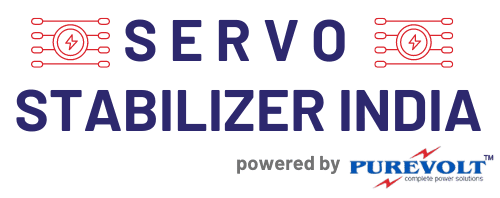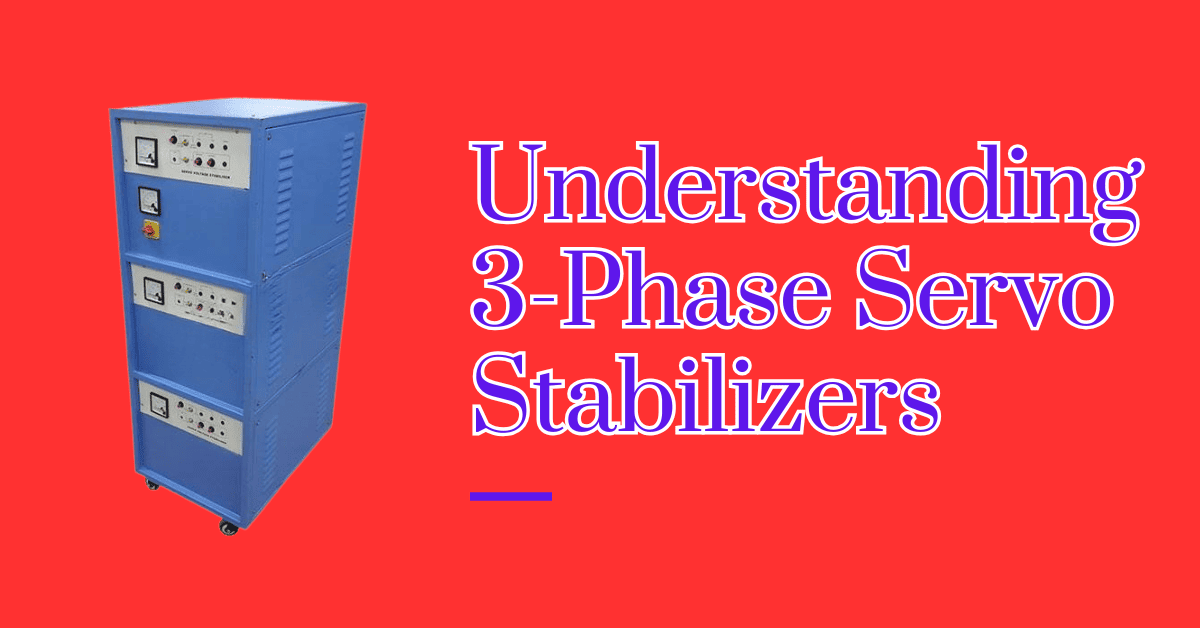Though you want a 3-phase servo stabilizer, you’re not sure how it works. Don’t worry; we’ve got you covered. For any industry nowadays, voltage fluctuation is a main problem. Saving sensitive yet heavy, vital and costly gear from voltage fluctuations.
This blog post will help us to define a 3-phase servo stabilizer: its characteristics, operation, advantages, etc.
The Three-phase Servo stabilizer is:
Independent of variations in the input voltage, an automatic voltage control device known as a 3-phase servo stabilizer is designed to maintain the output voltage constant throughout all three phases—R, Y, and B.
Using a servomotor-operated mechanism, these stabilizers adjust voltage changes in real-time, therefore guaranteeing a consistent supply to linked equipment.
3-phase servo stabilizers are especially crucial in places such as factories, data centres, and hospitals that operate high-load, three-phase electrical systems.
Important Characteristics of 3-Phase stabilizers
1. Industrial Range of Input Voltage
Because they can control input voltage swings between 300V and 470V, three-phase voltage stabilizers are ideal for sites with irregular power sources.
2. Proper Voltage
These stabilizers ensure that equipment always gets the optimal voltage by means of an output voltage accuracy of ±1%.
3. The Digital Control Panel
Modern microcontrollers on control panels provide accurate voltage regulation and simple monitoring.
4. Prevention of Short Circuit and Overload
Built-in protection systems shield machines against unanticipated voltage spikes and equipment overloads.
5. Cooling Systems
Depending on the load and needs, cooling systems with air or oil stabilizers are air-cooled or oil-cooled, respectively, for efficient heat dissipation.
Why use a servo stabilizer for a 3-phase connection?
Any operation running on heavy-duty machinery driven by three-phase power calls for a servo stabilizer for three-phase connections. Voltage imbalances in these systems can produce uneven current distribution, equipment overheating, or even outright failure. A three-phase servo stabilizer helps preserve system integrity and balance the load across all phases.
Typical Use of Servo stabilizers
1. Facilities for Production
Smooth operation of machinery like CNC machines, welding units, and injection moulding equipment depends on stable voltage.
2. The Industry of Textiles
Variations in voltage can affect spinning, weaving, and dyeing machines; stabilizers help to prevent equipment damage and declining quality.
3. Medical Centers
High-end medical imaging devices, including MRIs, CT scanners, and lab tools, require continuous voltage for exact diagnosis.
4. Data hubs and technology
Servers, routers, and storage devices depend on a consistent power source in order to prevent downtime and data loss.
5. Presses for printing
Common in printing and packaging operations, voltage fluctuations in presses for printing can affect the performance of the machinery and print quality.
6. Pharmaceutical Labs and R&D
Lab tools and precision instruments have to operate in very regulated surroundings with non-negotiable voltage stability.
Conclusion
If you run a factory, hospital, or data center, buying an industrial 3-phase voltage stabilizer is crucial to protect your infrastructure against voltage-caused damage. Our trustworthy and innovative 3-phase servo stabilizers from Servo stabilizer India are designed to meet the special needs of many sectors and offer voltage stability.
See our whole range of servo stabilizers and contact us right now for expert guidance on choosing the appropriate model for your situation.

